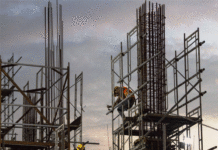- Avg. property sizes decline from 1,400 sq. ft. in 2014 to 1,020 sq. ft. in 2019
- NCR sees least decline of 6%, followed by Chennai with 8% and Bengaluru & Kolkata with 9% each
- MMR & Pune see highest decline of 45% and 38% respectively
- Avg. property sizes currently highest in Hyderabad at 1,570 sq. ft.; MMR has least with 530 sq. ft. area
- Affordable homes priced <INR 40 lakh see maximum decline of 28%; Bangalore sees max. decline of 33% within this segment
Mumbai, September 24, 2019: The liquidity crisis, changing buyer preferences, and growing concerns about affordability. These market realities have caused real estate developers to rethink the conventional wisdom of ‘bigger is better’, and to significantly moderate unit sizes across the 7 major cities.
Anuj Puri, Chairman – ANAROCK Property Consultants says, “ANAROCK’s most recent data indicates that average apartment sizes in the top 7 cities have shrunk by 27% over the last five years – from 1,400 sq. ft. in 2014 to nearly 1,020 sq. ft. in 2019 so far. Surprisingly, NCR – one of the worst-hit residential markets in recent years – has seen the least decline of merely 6% during this period. The current average size of apartments in NCR is nearly 1,390 sq. ft., pulling ahead of Bangalore where average flat sizes reduced to 1,300 sq. ft. in 2019.”
MMR already has the least average apartment size among all top cities, and also recorded the highest drop of 45% – from 960 sq. ft. in 2014 to 530 sq. ft. in 2019. Pune followed with a 38% reduction in sizes during this period, with the average apartment size currently at 600 sq. ft.
(Average sizes in both MMR and Pune are calculated on the carpet area while for the remaining cities it is based on the built-up area.)
“Interestingly, the main southern cities of Chennai, Bangalore and Hyderabad have seen size reduction of 8%, 9% and 12% respectively over the last five years,” says Puri. “What also makes these cities unique is that the prevailing average sizes of apartments are among the highest.”
For instance, the current average size of properties in Hyderabad (at 1,570 sq. ft.) is the maximum among the top 7 cities. Similarly, the average size of properties in Bangalore is also comparatively bigger at about 1,300 sq. ft. while in Chennai it is approx. 1,190 sq. ft.
Meanwhile, Kolkata saw sizes reduce by 9% over the last five years to stand at 1,120 sq. ft. now against 1,230 sq. ft. in 2014.
Why Flat Sizes are Shrinking
Among the major factors contributing to the escalating ‘claustrophobia effect’ of shrinking apartment sizes, demand for affordable homes in metros tops the list. Also, buyers are increasingly looking to avail the government’s credit subsidy benefits for affordable housing. These require a home to be priced <INR 45 lakhs and not exceed 60 sq. mt. carpet area or approx. 850 sq. ft. built-up area (including overall loading).
Seen in that light, the reduction in sizes – particularly in the affordable segment – helps buyers to avail of the subsidies. Moreover, buying an affordable home also comes with GST benefits. The GST for affordable housing is 1% as against 5% for mid-segment homes.
In short, buyers get reduced costs and added benefits, but lose out on space. Developers get to attract more buyers, but many have had to shed their cherished ‘luxury’ market categorization and stoop to conquer.
Segment-wise Break-up
On further analysis, it emerges that affordable homes priced <INR 40 lakhs have seen the maximum decline in sizes over the previous years, while ultra-luxury homes saw the least:
- Affordable homes priced <INR 40 lakhs saw average sizes reduce by 28% – from 750 sq. ft. in 2014 to 540 sq. ft. in 2019
- Mid-segment apartments priced from INR 40 lakhs to INR 80 lakhs saw sizes reduce by 17% – to 950 sq. ft. in 2019 from the previous 1,150 sq. ft. in 2014
- Premium homes priced between INR 80 lakhs to INR 1.25 Cr saw a 21% reduction in sizes – from 1,450 sq. ft. in 2014 to around 1,140 sq. ft. in 2019.
- Luxury homes priced INR 1.5 Cr to INR 2.5 Cr saw an 18% reduction in average property sizes – from 1,640 sq. ft to 1,350 sq. ft.
- Ultra-luxury homes priced >INR 2.5 Cr saw the least impact of external headwinds and continued to offer large-sized units. The segment saw a mere 8% decline in average property sizes over the last five years – from 2,400 sq. ft. in 2014 to around 2,200 sq. ft. in 2019.
Affordable Housing: City-wise Dynamics
- Bangalore has seen maximum reduction in average affordable property sizes. In 2014, the average size of an affordable unit was around 1,070 sq. ft. area – this fell sharply to around 710 sq. ft. in 2019. Though the ‘Garden City’ has high demand for mid-segment properties, affordable homes are also attracting contemporary homebuyers.
- Pune, India’s other IT hub, has seen the least reduction in sizes of affordable units (20%) in the last five years. This coincides with the fact that within the city, affordable homes have maximum demand and builders are wary of tampering with sizes. Of the total 22,830 units sold in Pune in H1 2019, nearly 47% belonged to the affordable category alone. The current average size of units in affordable homes is around 565 sq. ft. – slightly more than the national average of 540 sq. ft.
- MMR, with a current average size of 425 sq. ft., saw a 33% reduction in affordable housing sizes since 2014, followed by Chennai with 30% during this period. Sizes reduced from 900 sq. ft. in 2014 to 630 sq. ft. in 2019.
- Hyderabad has the maximum average size in the affordable category among top 7 cities with 810 sq. ft.. Average unit sizes have reduced by 26% since 2014, followed by Kolkata with 24% at 705 sq. ft. currently.
- NCR saw affordable housing sizes reduce to 650 sq. ft. from 890 sq. ft. in 2014.
Corporate Comm India (CCI Newswire)



















